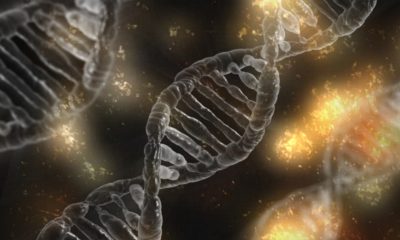The sea urchin, a relative of starfish and sand dollars, according to experts may be the key to create a process for carbon capture. It has been recognized around the world that carbon dioxide emission is one of the major contributors to climate change. Many experiments have been made through the years to reduce carbon dioxide emission on a global scale.
One of the pilot studies being conducted to capture and store carbon proposes for the carbon dioxide is to pump it into deep holes in the grounds, which is costly, difficult and risky as there is that off chance that the gas may leak out back to the surface and far away from the source of the storage. Another proposed solution is to convert carbon dioxide (CO2) into magnesium carbonate or calcium.
Research and Discovery
According to physicist Dr. Lidija Šiller of Newcastle University in England where she is also a Reader in Nanoscale Technology, it was only a chance discovery.
They were doing research on finding the details of how carbon dioxide reacts to water and looking for a catalyst that could make the process faster. Dr. Šiller was also studying how organisms such as the sea urchin absorb carbon dioxide into their skeletal system and turn the gas into calcium carbonate.
When she and her colleagues analyzed the urchin larvae’s surface, they found a high amount of nickel on the exterior shell. When they added the nickel nanoparticles to their carbonic acid test, they discovered that the CO2 was completely removed.
Their discovery made by experts at Newcastle University was published in the February 5, 2013 issue of “Catalysis Science & Technology,” an academic journal. The experts believe that the discovery will potentially revolutionize the method of capturing and storing CO2 to reduce its emission and clean up the atmosphere.
Using the nickel catalyst will convert the CO2 swiftly and economically, turning the harmful gas into calcium carbonate (chalk), a harmless solid mineral.
Lead author of the research paper, Gaurav Bhaduri, a PhD student at the university, explains that a nickel catalyst continue to work regardless of the pH. It has magnetic properties that allow the nickel to be recaptured and reused many times. Likewise, the material is 1,000 times cheaper than the enzyme carbonic anhydrase. Moreover, the by-product is completely harmless and still useful. Mr. Bhaduri is enrolled at the
School of Chemical Engineering and Advanced Materials at the University of Newcastle.
What are sea urchins?
You might have encountered those small and round sea creatures full of long and thin spines near the shore or among rocks on the beach. These are called sea urchins. Most of the time they are on sea beds up to 5,000 meters deep. Sea urchins come in many colors – black, red, olive green, dull green, light pink, purple and brown. They are related to the sand dollars, sea cucumbers and sea stars.
What differentiate the sea urchin from its cousins are the long thin spines that surround its round body or test. The length of the spines range from one centimeter to three centimeters, and on some species could be as long as ten to thirty centimeters. The spines are sharp and could pierce human skin. It could be very painful, and at times cause allergic reactions. The spines are their protection against predators as they move slowly in the water, eating algae and seaweed. Despite their unusual appearance, they are a delicacy, especially in Asian countries where its roe is used as an ingredient in many Asian dishes.















Facebook
Twitter
Pinterest
Google+
LinkedIn
Email